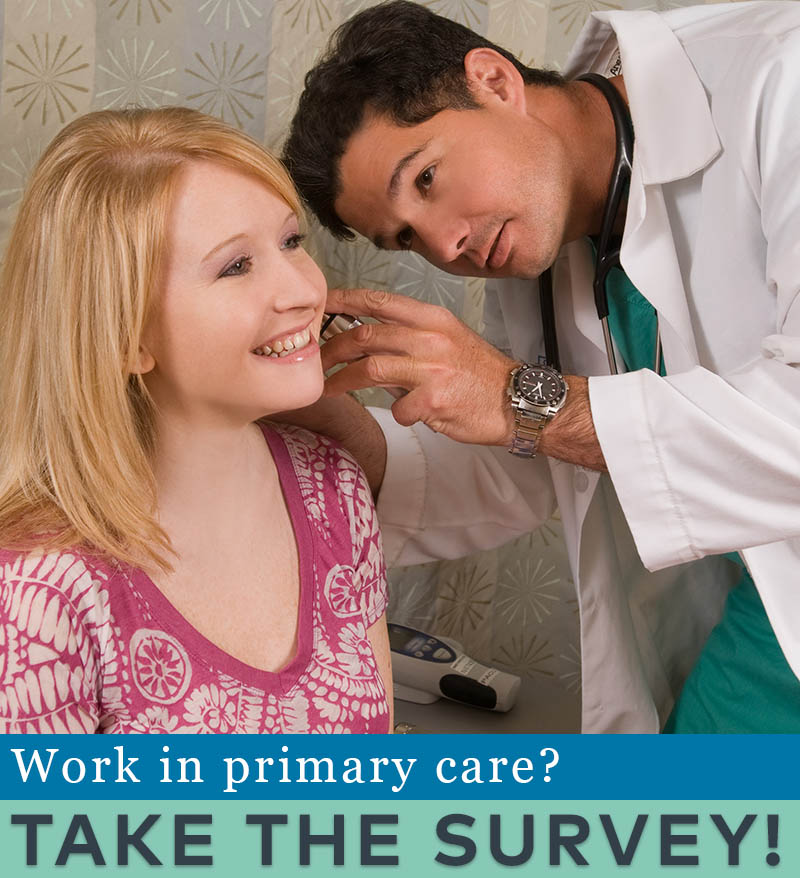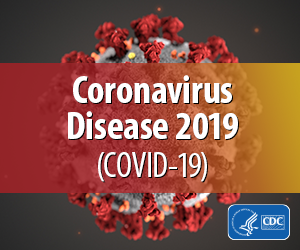You are looking at an archived version of our site. Please visit thepcc.org for a fresh, new experience!
You are here: Array » Primary Care & COV ...
Primary Care & COVID-19: Week 14 Survey
Check back weekly for the latest survey results and updates.
For last week's data, see Week 13 Results.
Who replied to the survey in Week 14?
The Larry A. Green Center, the Primary Care Collaborative and 3rd Conversation are partnering to regularly survey primary care clinicians and patients to better understand the impact of COVID-19 in real time.
A clinician snapshot was fielded June 12-15. Patient results referenced below are from a survey done the previous week. There were 763 clinician responses from 49 states, with the largest share of respondents from Texas (13%). Family medicine clinicians made up 67% of the respondents, followed by internal medicine (11%), pediatrics (6%), geriatrics (6%) and other (11%). Roughly 20% report practicing in a rural setting, and 24% report practicing in a patient-centered primary care home. Responses came from a range of practice sizes, with 40% working in a practice setting of more than 10 clinicians, 28% working in a practice with 4-9 clinicians, and 31% in very small practices of 1-3 clinicians. 37% of respondents describe their practice as made up of a majority of low-income patients.
Results at a glance
This week’s surveys show only small signs of recovery for clinicians, with safety and financial concerns weighing heavily on them as factors beyond their control have become barriers to creating a sustainable “new normal” in the near term. This is translating to feelings of being overlooked and burned out.
Practices continue to struggle despite the country opening up: When asked about the level of “strain” on their practice, 63% of respondents reported a level of 4 or 5 out of 5. This rate has declined only slightly over the last two surveys.
With most states gradually lifting stay-at-home restrictions over the last few weeks, primary care practices are not yet experiencing a sharp rebound in in-person visits. More specifically, half of respondents report that volumes of face-to-face patient visits remain 50% below their previous level, almost half report that patients are refraining from scheduling well and chronic care visits although the practice is offering them, and non-face-to-face care is at an “all-time high,” according to 60% of respondents. When asked about the mix of visits over the last week across phone, video, and in-person, the percentage of in-person visits held steady with the previous week at 45%.
Over the last 4 weeks, 40% of respondents report needing to lay off or furlough clinicians or staff, and one-quarter have had to skip or defer clinician salaries.
Compounding the financial stress, roughly one-quarter of practices report that masks and gowns remain hard to come by, and 22% report “severely limited” access to PPE. Almost 20% report paying very high prices for PPE, and 15% are experiencing medication or vaccine shortages or low inventories. These numbers are little changed from the previous week.
Stress is also psychological: When asked about their own well-being, 45% of clinicians report that their psychological well-being has suffered, and almost half report they lack knowledge of resources for support during the emergency. Overall, the picture is of remarkable resilience on the part of both clinicians and patients, yet both are experiencing severe financial stress while also coping with uncertainty over the trajectory of the coronavirus. Clinicians report their patients were an overwhelming 82% “adaptable” and willing to wear masks.
Patients are also challenged by COVID-19: In the most recent patient survey fielded during the first week of June, when asked whether they had contacted or been contacted by their primary care practice in the last 8 weeks, approximately 50% responded yes. Over 60% of patients expressed a desire to see video and phone visits continue to be available after the pandemic, but 68% prefer to meet in person with their clinician.
For those who responded that they had avoided care over the last 8 weeks, 31% cited the risk of catching COVID-19, and 18% reported “not wanting to be a bother” to their practice. Roughly 16% said they put off care even though they were sick, and 10% said they put off care when they were injured.
Financial worries also loom large for patients. Almost 25% of patients expressed worry about being able to afford their co-pay for care, and 27% reported that they limit their care because of a high deductible or a lack of cash in their Health Savings Account (HSA).
Learn more: Download:
Both include select open-ended answers to survey questions.
Voices from Clinicians on the Primary Care Front Lines
Practices are closing due to a range of factors.
I was laid off 4 weeks ago. (Oregon)
I am retiring. (New Mexico)
Furloughs. Furloughs. (Pennsylvania)
The pandemic killed my practice. (Texas)
I have become the sole provider in my area. (California)
Feels like a suicide mission. I quit. (Rhode Island)
I was laid off. (Texas)
My receptionist quit due to fears of contracting COVID and taking it home to family. (Ohio)
The collateral damage to the primary care workforce was preventable.
I am becoming depressed with each passing day. I think about killing myself every day. (Washington)
Burn out is significant. Compounded by the enormous emotional weight will be dangerous. Please help. (Connecticut)
I suspect that in another year, the family medicine practice I served over the past 23 years will be closed. (Wisconsin)
Physician suicide, burnout, I’m seeing it happen. (Michigan)
Nerve-wracking and depressing as hours get cut back and my daughter wonders if I will get COVID-19 and die. (Texas)
I feel like I was hung out to dry. Take chances with my health or abandon my patients were my only choices. (New York)
This job is now an actual killer. (Delaware)
| Attachment | Size |
|---|---|
| 628.33 KB | |
| 756.54 KB | |
| 1.51 MB | |
| 515.49 KB |

Are you a physician, nurse practitioner, or PA working in primary care?
Help PCC and the Larry A. Green Center track how your practice is responding to the COVID-19 outbreak by completing the Green Center's occasional survey.
The regular surveys are no longer being conducted.
COVID-19 Updates
May 9, 2022 | Primary Care Collaborative
April 19, 2022 | Primary Care Collaborative
April 19, 2022 | Primary Care Collaborative
March 7, 2022 | STAT
February 27, 2022
- 1 of 39
- next ›

Recent News
August 16, 2024
August 12, 2024
July 16, 2024
May webinar highlights: “The Commercial Market: Alternative Payment Models for Primary Care” Nate Murray explains w… https://t.co/KX9Wi2w6oY —
2 years 6 months ago
@CMSinnovates’ primary care strategy is rooted in a 2021 @theNASEM’s report which called #primarycare “foundational… https://t.co/glbPxvCysg —
2 years 6 months ago
@CMSinnovates has a new #primarycare strategy, envisioning “ACO-based primary care model tests that may focus on pr… https://t.co/aJGF1z411l —
2 years 6 months ago
- Page 1
- ››
Secondary menu
Copyright © 2024 Primary Care Collaborative





